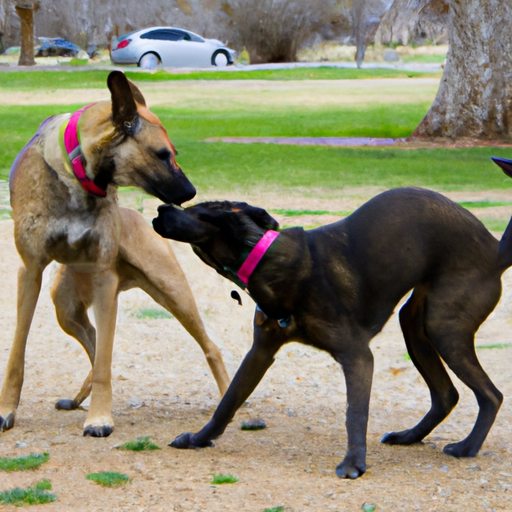As a caregiver, you’re tasked with ensuring the wellbeing of those in your care and this extends to the relationship between two dogs. Understanding their behaviors and interactions can be a deep dive into the canine psyche. So, let’s dive in and find out how you can tell if dogs like each other.
H2: Behavior Analysis
One of the most effective ways to determine if dogs like each other is to observe their behavior. Dogs that are friendly with each other will exhibit signs of positive interactions such as:
- Playful body language
- Relaxed and wagging tails
- Comfortable sharing toys or food
- Enjoying each other’s company without signs of aggression or fear.
H2: Understanding Dog Play
Dogs have a unique language of play. Here’s a table illustrating some common dog play behaviors and what they mean:
| Behavior | Meaning |
|---|---|
| Bowing | Invitation to play |
| Chasing | Enjoyment of play |
| Showing belly | Trust and submission |
It’s important to note, however, that not all dogs play in the same way. Some prefer rough and tumble play, while others may prefer a more gentle interaction.
H2: Vocal Communication
Just as humans use vocal communication to express emotions, so do dogs. Listening to the noises they make can provide insight into their feelings towards each other.
- Friendly barks or whines can indicate excitement and affection.
- Growls or snarls, on the other hand, are serious warnings.
- A low, throaty growl can mean a dog is scared or uncomfortable.
H2: Physical Interaction
Physical interaction is a key indicator of how dogs feel about each other. Dogs that like each other may:
- Snuggle together during nap time
- Lick or groom each other
- Playfully nibble or ‘mouth’ each other without causing distress
H2: Changes Over Time
Remember, relationships between dogs can change over time. Regularly monitoring their behavior can provide valuable insight into the dynamic between them. Are they more relaxed around each other? Do they seek each other out for companionship? These are positive signs of a growing bond.
FAQ
Q: My dogs are fighting. Does this mean they don’t like each other?
A: Not necessarily. Dogs may fight as part of establishing a hierarchy. However, if fights become frequent or violent, it’s best to seek professional help.
Q: Is it normal for dogs to growl during play?
A: Yes, growling can be a part of healthy dog play. But it’s important to watch for signs of distress or aggression to ensure it doesn’t escalate.
Q: One of my dogs always steals the other’s toys. Is this a sign of dislike?
A: Not always. This could be a dominance behavior or simply a high-interest in toys. Try providing them with separate toys to see if this behavior continues.
Understanding and interpreting canine behavior is a fascinating journey. As a caregiver, being able to decipher these signs can greatly improve the quality of life for your furry friends. Stay curious, observant, and patient, and you’ll no doubt master the art of understanding doggy friendships in no time.



